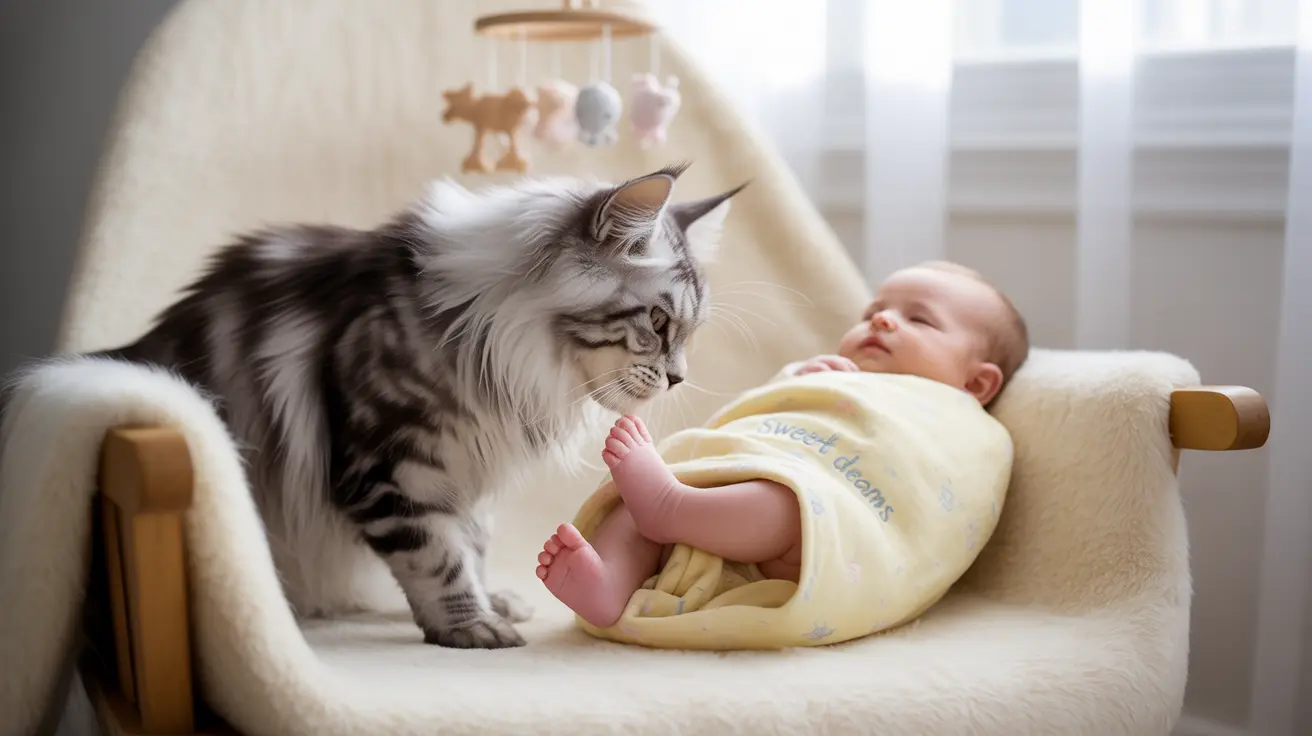Introduction
The relationship between cats and babies has long been surrounded by myths, folklore, and misconceptions. As more families welcome both furry companions and newborns into their homes, understanding the truth about cats and babies becomes increasingly important. This comprehensive guide will separate fact from fiction, providing evidence-based insights into how cats and infants can safely share a home while addressing common concerns that new parents might have.
Modern research has shown that many traditional beliefs about cats and babies are unfounded, and with proper preparation and supervision, these two vulnerable members of your household can coexist harmoniously. Let's explore the reality behind these myths and learn how to create a safe, nurturing environment for both your cat and your baby.
Common Myths About Cats and Babies: Separating Fact from Fiction
One of the most persistent myths is that cats will intentionally harm babies or "steal their breath." This centuries-old superstition has no scientific basis. While cats should never be left unsupervised with infants, they don't pose any inherent threat to babies. In fact, most cats are naturally curious but cautious around newborns.
Another common misconception is that cats will become dangerously jealous of new babies. While cats may experience stress during this significant household change, proper introduction and management can prevent behavioral issues and ensure a smooth transition.
Creating a Safe Environment for Both Cat and Baby
Before the Baby Arrives
Preparation is key to successful integration. Start adjusting your cat's routine several months before the baby's arrival. This includes:
- Gradually changing sleeping arrangements if necessary
- Installing baby gates or other barriers
- Creating safe spaces where your cat can retreat
- Introducing baby-related sounds and smells gradually
After the Baby Comes Home
When bringing your newborn home, maintain a controlled introduction process:
- Allow your cat to investigate baby items from a safe distance
- Keep the nursery off-limits during nap times
- Never leave your cat unsupervised with the baby
- Maintain your cat's regular feeding and attention schedule
Health Considerations and Preventive Measures
While cats pose minimal health risks to babies, certain precautions should be taken:
- Keep the litter box area clean and inaccessible to crawling babies
- Ensure your cat's vaccinations are up to date
- Practice good hygiene, especially hand washing after handling the cat
- Regular veterinary check-ups to prevent parasites and other health issues
Building Positive Relationships
As your baby grows, fostering a positive relationship between child and cat becomes important. This includes:
- Teaching gentle handling and respect for the cat's space
- Recognizing signs of stress in your cat
- Creating positive associations through treats and praise
- Supervising all interactions between cat and child
Benefits of Growing Up with Cats
Research suggests that children who grow up with cats may experience several benefits:
- Reduced risk of developing allergies
- Enhanced emotional development
- Better understanding of empathy and responsibility
- Stronger immune systems
- Increased social skills
Frequently Asked Questions
Is it true that cats try to steal a baby's breath or smother infants?
No, this is a myth with no scientific basis. While cats should never be left unsupervised with sleeping infants, they do not intentionally try to harm babies. The myth likely originated from cats' tendency to seek warm places to sleep.
How can I safely introduce my cat to a newborn baby at home?
Start with gradual introductions, allowing your cat to investigate baby items before the arrival. When bringing baby home, supervise all interactions and reward your cat for calm behavior. Maintain regular routines and provide plenty of attention to your cat.
What health risks do cats pose to babies, and how can I protect my family?
The main health concern is toxoplasmosis, which can be avoided by having someone else clean the litter box or using gloves. Keep cats' vaccinations current and maintain good hygiene practices. Regular vet check-ups help ensure your cat stays healthy.
Why do cats get jealous when a new baby arrives, and how can I manage this behavior?
Cats may show signs of stress due to changes in routine and attention, rather than jealousy. Maintain regular feeding schedules, provide extra attention when possible, and create safe spaces for your cat to retreat when needed.
Can having a cat around reduce my child's risk of allergies or asthma?
Yes, research suggests that early exposure to cats can help reduce the risk of developing allergies and asthma. This exposure helps strengthen the immune system during crucial developmental periods.
Conclusion
With proper preparation, supervision, and understanding, cats and babies can not only coexist safely but also develop meaningful relationships that benefit both parties. By following expert guidelines and maintaining awareness of both your cat's and baby's needs, you can create a harmonious household where both can thrive.






